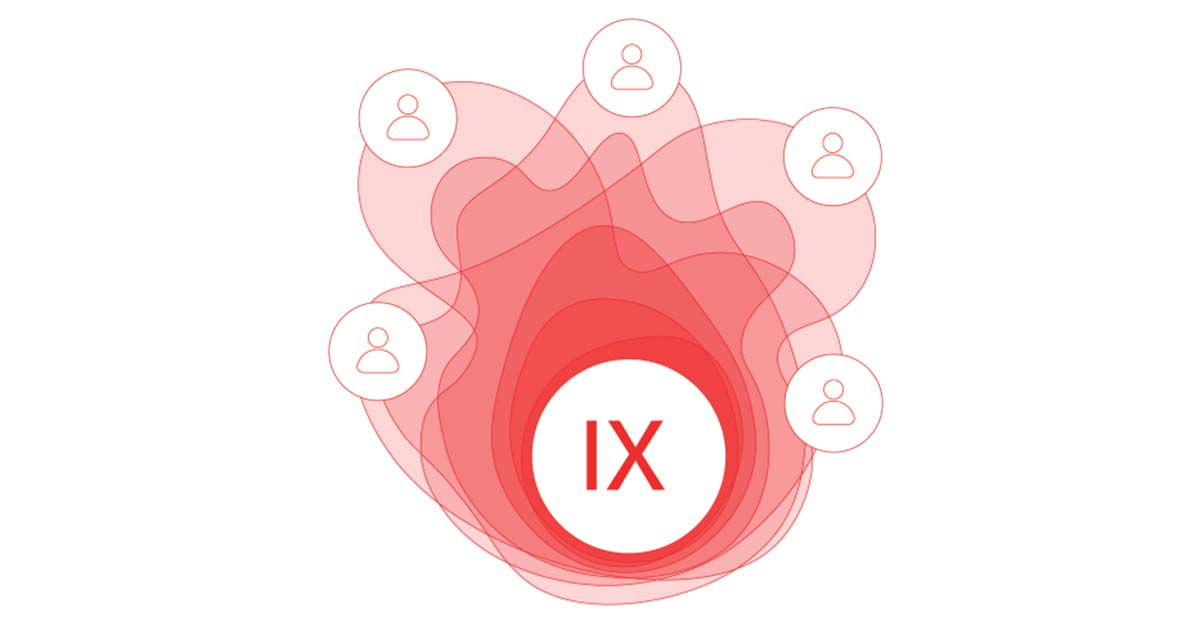

The release of new technology by Signia hearing aid company generates significant excitement and holds paramount importance within the field of hearing health care. This anticipation stems from the potential for groundbreaking innovations that can substantially enhance the auditory experience for individuals with hearing impairments.
Technological advancements in Signia’s hearing aids often promise improved sound processing, speech clarity, and adaptability to diverse listening environments. For those relying on hearing aids, each new release represents an opportunity for heightened accessibility and a potential transformation in the way they engage with the world. Beyond the individual level, these innovations contribute to the continuous evolution of the hearing care industry, pushing boundaries and setting new standards for effective hearing solutions. Ultimately, the excitement surrounding Signia’s IX new hearing aid technology is intertwined with the prospect of significantly improving the quality of life for individuals facing hearing challenges.
In this blog we are going to share with you the newest features and benefits with the IX hearing aid. First, here are some general features that you might find in current Signia hearing aids:
· Bluetooth Connectivity: Many Signia hearing aids come equipped with Bluetooth technology, allowing users to connect their hearing aids to smartphones, tablets, and other compatible devices. This enables wireless streaming of phone calls, music, and other audio directly to the hearing aids.
· Rechargeable Batteries: Some Signia hearing aids use rechargeable batteries, eliminating the need for disposable batteries. Users can charge their hearing aids overnight for a full day of use.
· Directional Microphones: These microphones help users focus on the sounds they want to hear while minimizing background noise. This feature can be particularly useful in noisy environments.
· Tinnitus Therapy: Signia offers some models with built-in tinnitus therapy features. This can include white noise or other soothing sounds to help manage tinnitus symptoms.
· Own Voice Processing (OVP): This technology is designed to enhance the natural sound of the user’s own voice, making it sound more natural and less distorted.
· Remote Control and Smartphone Apps: Many Signia hearing aids can be controlled and adjusted remotely using a dedicated remote control or a smartphone app. This allows users to make adjustments to their hearing aids discreetly.
· Speech Enhancement: Some models may include features that enhance speech clarity, making it easier for users to understand conversations in various environments.
· Automatic Environmental Adaptation: Signia hearing aids may have sensors that automatically adjust settings based on the user’s environment, providing optimal hearing in different situations.
· Feedback Suppression: This feature helps reduce or eliminate feedback and whistling sounds that can occur with hearing aids.
Traditional hearing aid processing designed to improve speech in noisy environments often struggles in group conversations. Using a directional microphone with a narrow focus can help when listening to someone directly in front, but it may block out other talkers and restrict the wearer from turning their head. On the other hand, a broader focus captures all talkers but usually requires more aggressive noise reduction, which can distort sound and lead to a poor listening experience.
Signia, a leading developer in hearing aid solutions, has made significant strides in addressing speech-in-noise challenges. Their Augmented Xperience (AX) platform, launched in 2021, introduced Augmented Focus, utilizing advanced directional technology to split incoming sounds into two streams: one for speech (focus stream) and one for background noise (surrounding stream). While this approach offers broad speech enhancement, it has limitations in understanding individual talkers’ dynamics in a conversation.
The game-changing development comes with the introduction of RealTime Conversation Enhancement (RTCE) in the new Signia Integrated Xperience hearing aids. Utilizing a multi-stream architecture, RTCE revolutionizes conversation processing, providing enhanced support for wearers in dynamic group settings.
The RealTime Conversation Enhancement (RTCE) technology represents a significant advancement in hearing aid functionality, building upon the foundation of Augmented Focus processing introduced in Signia AX. Augmented Focus utilizes split processing, a method that separates incoming sound into two distinct streams, enabling the independent processing of speech and noise from the front and back hemispheres, respectively.
In the Signia IX model, under the sophisticated control of advanced sound analysis, RTCE introduces three additional focus streams to the existing split-processing focus stream in the front hemisphere. This augmentation results in unprecedented enhancements, particularly in scenarios involving group conversations amidst background noise.
The RTCE processing unfolds in three stages: Analyze, Augment, and Adapt. While the depicted process in Figure 1 simplifies the complex and simultaneous nature of split processing and the three RTCE stages, it provides a foundational overview of its functioning.
The initial stage, Analyze, involves the meticulous examination of incoming sound by the Conversation Source Analyzer. This component determines the presence of speech in the front hemisphere, utilizing a proximity detector to assess the relevance of the speech. This includes distinguishing between relevant speech from nearby conversation partners and irrelevant background noise or distant talkers. Simultaneously, the Conversation Dynamics Analyzer analyzes the entire conversation layout, considering turn-taking dynamics, locations of conversation partners, and non-speech sound sources, processing an impressive 192,000 data points per second.
The subsequent stage, Augment, creates three dynamic focus streams through advanced binaural beamforming, integrating them into the Conversation Booster along with the split-processing front-hemisphere focus stream. These four focus streams cover the entire front hemisphere, facilitating separate processing of speech from various directions, effectively suppressing noise from non-speech directions.
The information about the conversation layout acquired in the Analyze stage allows for tailored suppression of noise, ensuring that the processing of speech in the focus streams aligns with the conversation dynamics. Simultaneously, the Surrounding Stream processes background noise independently, offering a different approach to handling surrounding noise. This method allows for more aggressive noise reduction in the surrounding stream without masking the target speech, providing an immersive listening experience.
The final stage, Adapt, harmonizes the focus streams and surrounding stream, creating a live auditory space where conversation partners stand out against background noise. This adaptive process ensures that the focus streams continuously adjust to changes in the conversation layout, maintaining optimal processing at all times.
The comprehensive outcome of the three RTCE stages is a listening experience that seamlessly adapts to both the conversation layout and the entire acoustic environment. This technological advancement enables wearers to actively participate in conversations while remaining attuned to their surroundings.
Twenty people took part in a study about hearing. They were between 55 and 82 years old, with an average age of 72. All of them had a certain type of hearing loss called sensorineural sloping hearing loss.
Each person was given special hearing aids called Signia Pure Charge&Go T IX. Half of them got one kind with closed couplings, and the other half got a different kind with vented couplings. The hearing aids had two programs: one with all the features turned on, and another with one specific feature turned off.
They did two tests to see how well the hearing aids worked. In the first test, people listened to sentences in a quiet room and repeated what they heard. In the second test, it was like being in a big room with lots of background noise, as if they were in a group conversation. They listened to sentences coming from different directions while background noise played from other directions.
The goal was to see how well people could hear in different situations. They did each test with both settings on the hearing aids: one with a specific feature called RTCE turned on, and the other with RTCE turned off.
Before the actual tests, everyone had a practice round to get used to the task. The order of the tests was mixed up for each person to make sure the results were fair. Also, the participants didn’t know which setting was being tested each time. This way, the study checked how well the hearing aids worked in different conditions for everyone involved.
In the standard OLSA test, the study analyzed the Speech Reception Threshold (SRT80) values for 20 participants using hearing aids with RTCE (RealTime Conversation Enhancement) turned on and off. Lower SRT80 values indicate better performance.
Even though some people had different types of hearing aids (closed couplings worked better than vented couplings), the special feature called RTCE helped everyone in both groups. They did a special test to check this, and the results showed that RTCE made a big difference in how well the hearing aids worked. It was like having a superpower for the hearing aids! The test results were so clear and important that the scientists are confident that RTCE really makes the hearing aids work much better.
In this study, they tested a special technology called RealTime Conversation Enhancement (RTCE) in hearing aids. The results showed that when RTCE was turned on, people could understand speech better in both simple one-on-one conversations and more complex group conversations.
In the simple test, where one person talked to the wearer in a quiet room, using RTCE gave a significant improvement in speech understanding for 90% of the people. It was like having better ears for a regular conversation.
In the more complicated test, simulating a group conversation with people talking from different directions, RTCE also made a big difference. 95% of the participants performed better when RTCE was turned on. This means RTCE can help a lot in challenging group conversations where there’s a lot of background noise.
Overall, the study suggests that RTCE can make conversations easier for people using hearing aids. It’s like having a superpower in their ears, helping them understand and join in conversations more easily. The technology adapts to different situations, like when people move or the wearer turns their head, making it a valuable tool for better hearing in various conversation setups.
The Signia IX hearing aid stands out as a remarkable leap forward from its predecessor, the AX hearing aid, showcasing significant advancements in technology. A key highlight is the notable improvement in microphone functionality. Unlike its predecessor, the Signia IX boasts enhanced microphone features, providing distinct focus situations. Importantly, as the technology level increases, so does the availability of focused microphones, signifying a refined and sophisticated evolution in microphone technology. This innovation enables more precise and targeted audio capture, catering to diverse listening environments. The Signia IX hearing aid sets a new standard in the realm of hearing technology, promising a heightened and tailored auditory experience for users.
Signia IX newest latest and greatest hearing aid technology introduces significant benefits for individuals with hearing loss. The enhanced microphone technology, with various focus situations and increased availability at higher technology levels, ensures a refined and tailored auditory experience. This innovation enables users to enjoy clearer and more precise sound in diverse listening environments. The advanced features of the Signia IX empower individuals with hearing loss by providing improved speech clarity and adaptability, ultimately enhancing their overall quality of life. With this cutting-edge technology, users can expect a transformative and more immersive hearing experience, allowing for better communication and engagement in various social and environmental settings.
Explore the cutting-edge Signia IX hearing aid, a technological marvel surpassing its predecessor. With enhanced microphone capabilities, including various focus situations and increased availability at higher technology levels, Signia IX offers a refined audio experience. Dive into the future of hearing technology for nuanced and targeted sound capture in diverse environments.
Signia Pure Charge&Go BCT IX hearing aids provide seamless Bluetooth Classic connectivity, superior sound processing, and all-day battery life. Designed for comfort and performance, these small, rechargeable RIC hearing aids offer hands-free calls, music streaming, and advanced speech clarity. Key features include:
Signia Active Pro IX hearing aids combine advanced technology with a modern earbud design for clear, comfortable listening. Ideal for users seeking strong performance in social settings, they offer superior connectivity, speech enhancement, and long battery life. Key features include:
Powered By SinglerDesign.com